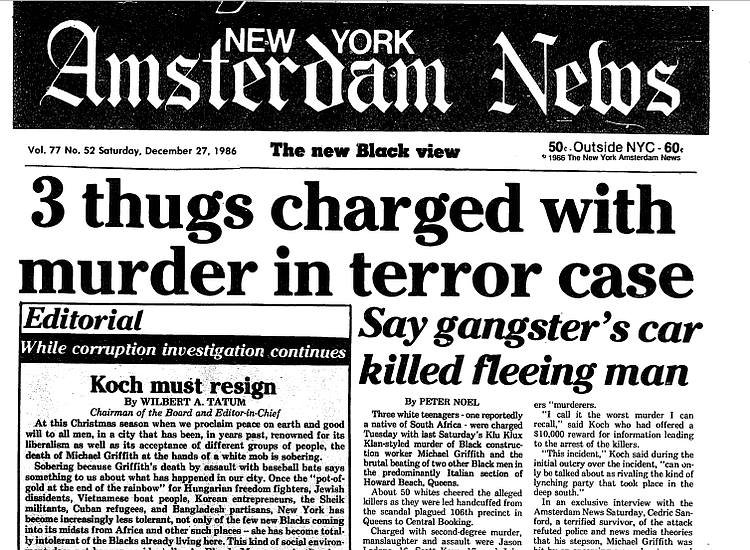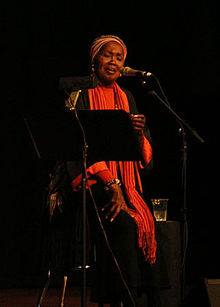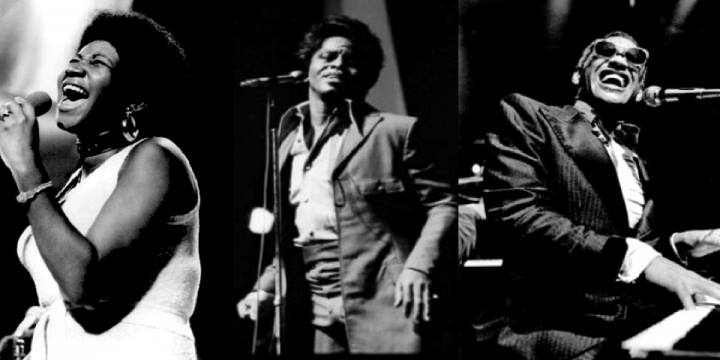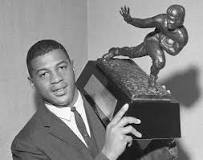GM – FBF – Today’s story is a painful one because it is close to
home being that I am from New Jersey and it was nothing for us to go to NYC or
any of the five sections known as Burrows. In the 1980s, several racially
motivated attacks dominated the headlines of New York City newspapers. On
September 15, 1983, artist and model Michael Stewart died on a lower Manhattan
subway platform from a chokehold and beating he received from several police
officers. A year later, on October 29, an elderly grandmother, Eleanor Bumpers,
was murdered by a police officer in her Bronx apartment as he and other
officers tried to evict her.
Later that year, on December 22, a white man, Bernhard Goetz,
shot and seriously wounded four black teenagers he thought were going to rob
him on a subway train in Manhattan. The Howard Beach racial incident in late
1986 propelled the predominantly Italian and Jewish community into the national
spotlight, exposing racial hatred in New York City. Enjoy!
Remember – “I could recall 25 years ago as a kid, I would not
recommend anyone black stopping there,” said Representative Gregory W. Meeks,
who is black and represents Old Howard Beach, east of Cross Bay Boulevard.
“Today, it’s definitely a different place.”
Today in our History – On December 20, 1986, a black man was
killed and another was beaten in Howard Beach, Queens, New York, United States
in a racially charged incident that heightened racial tensions in New York
City.
The man attacked was 23-year-old Michael Griffith (March 2, 1963
– December 20, 1986), who was from Trinidad and had immigrated to the United
States in 1973, and lived in Crown Heights, Brooklyn. He was killed after being
hit by a car as he was chased onto a highway by a mob of white youths who had
beaten him and his friends. Griffith’s death was the second of three infamous
racially motivated killings of black men by white mobs in New York City in the
1980s. The other victims were Willie Turks in 1982 and Yusuf Hawkinsin 1989.
Late on the night of Friday, December 19, 1986, four black men,
Michael Griffith, 23; Cedric Sandiford, 36; Curtis Sylvester and Timothy
Grimes, both 20, were riding in a car when it broke down in a deserted stretch
of Cross Bay Boulevard near the Broad Channelneighborhood of Queens. Three of
the men walked about three miles north to seek help in Howard Beach, a mostly
white community, while Sylvester remained behind to watch the car. They argued
with some white teens who were on their way to a party, then left.
By 12:30 a.m. on the 20th, the men reached the New Park
Pizzeria, near the intersection of Cross Bay Boulevard and 157th Avenue. After
a quick meal the men left the pizzeria at 12:40 a.m. and were confronted by a
group of white men, including the group they had earlier confronted. When Sandiford,
Grimes, and Griffith left the restaurant at 12:40 a.m., a mob of twelve white
youth awaited them with baseball bats, tire irons, and tree limbs. The gang,
led by Jon Lester, 17, included Salvatore DeSimone, 19, William Bollander, 17,
James Povinelli, 16, Michael Pirone, 17, John Saggese, 19, Jason Ladone, 16,
Thomas Gucciardo, 17, Harry Bunocore, 18, Scott Kern, 18, Thomas Farino, 16,
and Robert Riley, 19.
Racial slurs were exchanged and a fight ensued. Sandiford and
Griffith were seriously beaten; Grimes escaped unharmed. The mob attacked
Griffith and Sandiford. Grimes, who drew a knife on the angry mob, escaped with
minor injuries. Sandiford begged, “God, don’t kill us” before Lester knocked
him down with a baseball bat. With the mob in hot pursuit, the severely beaten
Griffith ran the nearby Belt Parkway where he jumped through a small hole in a
fence adjacent to the highway. As he staggered across the busy six-lane
expressway, trying to escape his attackers, he was hit and instantly killed by
a car driven by Dominic Blum, a court officer and son of a New York police
officer. His body was found on theBelt Parkway at 1:03 a.m.
The incident sparked immediate outrage in New York’s African
American community, prompting black civil rights activist Reverend Al Sharpton
to organize several protests in Howard Beach, as well as the Carnarsie and Bath
Bay sections of Brooklyn. Other leaders, including newly elected black
Congressman Floyd Flake and Brooklyn activists Sonny Carson and Rev. Herbert
Daughtry, called for boycotts of all white-owned Howard Beach businesses.
New York Governor Mario Cuomo appointed a special prosecutor,
Charles J. Hynes, who brought manslaughter, second degree murder, and first
degree assault charges against four leaders of the mob, Jon Lester, Jason
Ladone, Scott Kern and Michael Pirone. The other men were charged with lesser
offenses.
Griffith’s death provoked strong outrage and immediate
condemnation by then-Mayor of New York City Ed Koch, who referred to the case
as the “No. 1 case in the city”. Two days after the event, on
December 22, three local teenagers, Jon Lester, Scott Kern, and Jason Ladone,
students at John Adams High School, were arrested, and charged with
second-degree murder. The driver of the car that struck Griffith, 24-year-old
Dominick Blum, was not charged with any crime; a May 1987 grand jury did not
return criminal charges against him.
To protest the killing of Griffith, 1,200 demonstrators marched
through the streets of Howard Beach on December 27, 1986. A heavy NYPD presence
kept angry white locals, who were screaming at the crowd of marchers, in check.
The Griffith family, as well as Cedric Sandiford, retained the services of
Alton H. Maddox and C. Vernon Mason(who was later disbarred), two attorneys who
would become involved in the Tawana Brawley affair the following year. Maddox
raised the ire of the NYPD and Commissioner Benjamin Ward by accusing them of
trying to cover up facts in the case and aid the defendants.
After witnesses repeatedly refused to cooperate with Queens D.A.
John J. Santucci, Governor of New York Mario Cuomo appointed Charles Hynes
special prosecutor to handle the Griffith case on January 13, 1987. The move
came after heavy pressure from black leaders on Cuomo to get Santucci, who was
seen as too partial to the defendants to prosecute the case effectively, off
the case.
Twelve defendants were indicted by a grand jury on February 9,
1987, including the original three charged in the case. Their original
indictments had been dismissed after the witnesses refused to cooperate in the
case.
After a lengthy trial and 12 days of jury deliberations, the
three main defendants were convicted on December 21, 1987 of manslaughter, a
little over a year after the death of Griffith. Kern, Lester and Ladone were convicted
of second-degree manslaughter and Michael Pirone, 18, was acquitted. Ultimately
nine people would be convicted on a variety of charges related to Griffith’s
death.
On January 22, 1988, Jon Lester was sentenced to ten to thirty
years’ imprisonment. On February 5, Scott Kern was sentenced to six to eighteen
years’ imprisonment, and on February 11, 1988, Jason Ladone received a sentence
of five to fifteen years’ imprisonment.
In December 1999, the block where Griffith had lived was given
the additional name “Michael Griffith Street.”
Jason Ladone, then 29, was released from prison in April, 2000 after serving 10
years, and later became a city employee. He was arrested again in June 2006, on
drug charges. In May 2001, Jon Lester was released and deported to his native
England where he studied electrical engineering and started his own business.
He died on August 14, 2017 at age 48 of what some suspect was a suicide. He
left behind a wife and three children.[10] Scott Kern was released from prison,
last of the three main perpetrators, in 2002.
In 2005 the Griffith case was
brought back to the public’s attention after another racial attack in Howard
Beach. A black man, Glenn Moore, was beaten severely with a metal baseball bat
by Nicholas Minucci, who was convicted of hate crimes in 2006. The case was
revisited yet again by the media, after the death of Michael Sandy, 29, who was
beaten and hit by a car after being chased onto the Belt Parkway in Brooklyn,
New York, in October 2006. Research more about Black harassment in communities
and share with your babies. Make it a champion day!






